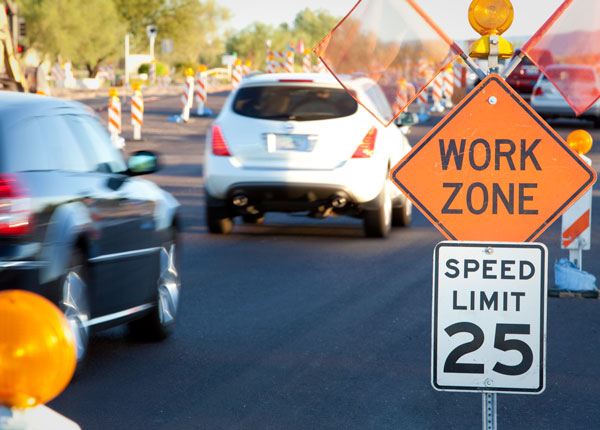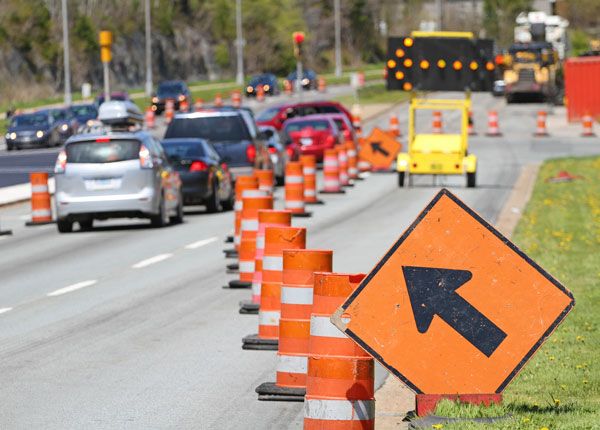
Highway Driving Safety: Important Driving Practices for High Speed
Updated Dec. 11, 2020This section summarizes those must-know highway driving techniques and safety practices. Organized into an easy-to-follow checklist, this information can be printed off and revisited as often as needed; you may wish to read through it again before taking your car onto a freeway. Highway hypnosis, velocitation and other prominent highway-driving threats are discussed here. We also cover defensive driving – the “prevention over cure” driving method that will help you avoid potentially dangerous situations before they occur.
Essential rules
These essential highway driving practices will help you to stay safe when using our country’s high-speed roads:
- 1

Stay alert and focused on the task at hand.
Keep scanning the roadway for hazards, checking multiple visual ranges and planes. Check on traffic behind you, using rear-view and side-view mirrors. - 2

Do not drive when tired.
If you feel yourself becoming sleepy behind the wheel, exit the highway at the next opportunity and find a place to rest. - 3

Never drive in another motorist’s blind spot.
They will not be able to see you in their mirrors and may attempt to change lanes, without realizing the danger. - 4

Always allow more space than you think you need when passing.
- 5

- 6

Flash your brake lights whenever traffic ahead of you is visibly slowing.
- 7

Abide by all signs, signals and road markings.
You may need to adjust your speed in line with changes to the limit or change your position if two traffic lanes are about to merge. - 8

Maintain a safe space around your vehicle.
Highway drivers should aim for a five-second gap between themselves and the vehicle in front. If possible, change lanes into a slower lane when being tailgated. Do not speed up to maintain space behind your vehicle. - 9

Do not drive too slowly.
This would create danger by forcing other drivers to brake or change lanes to avoid you. - 10

Reduce your speed to account for poor weather or roadway conditions.
Posted speed limits are based on “ideal” conditions. - 11

Drive defensively.
You must aim to identify and avoid dangerous situations before they occur. Do not rely on other drivers doing the right thing.
Highway hypnosis and velocitation
Highway hypnosis and velocitation are two incredibly dangerous altered mental states which can occur in monotonous driving environments. Highway hypnosis happens when a driver is lulled into a less-engaged state of mind by an uneventful and repetitive view (for instance, a long, straight stretch of highway) and “hypnotic” sounds (such as the low hum of an engine, wind rushing past the vehicle or tires on tarmac). When highway hypnosis sets in, a driver will operate their vehicle as if on “auto-pilot” and may not be alert enough to spot hazards or drive defensively. You can avoid highway hypnosis by:
- Not driving when tired.
- Taking regular breaks.
- Keeping your eyes moving rather than staring at a fixed point on the road ahead.
- Reading highway signs to stay focused.
Velocitation describes a phenomenon that occurs on open, high-speed roads, where drivers lose the ability to accurately gauge how fast they are traveling. If you have been traveling at the same speed on a highway for a significant time, velocitation could lead you to exceed a safe speed without realizing it. Checking your speedometer regularly is the best way to guard against velocitation.
Defensive driving
Defensive driving is the practice of thinking ahead and acting to avoid problems BEFORE they occur. Here are some potentially problematic situations you will need to watch out for when driving on a limited-access highway:
- 1

Disabled vehicles on the road or shoulder.
You should reduce your speed and merge into a different lane to allow the disabled vehicle more room, if possible. - 2

Traffic breaks, toll booths and immigration checkpoints. You may need to merge into a new lane and will certainly need to slow down and stop. Other drivers may fail to do these things and create a dangerous situation.
- 3

Congestion on the road ahead.
Flash your brake lights and reduce your speed as you approach slow-moving traffic. - 4

Emergency vehicles.
You may need to pull over to let them pass. - 5

Highway work zones.
Reduce your speed, merge into an appropriate lane if a detour or lane-closure is in place.
Keep in mind that defensive driving is a skill you should aim to develop every time you get behind the wheel – it is not exclusive to highways and other high-speed roads.




